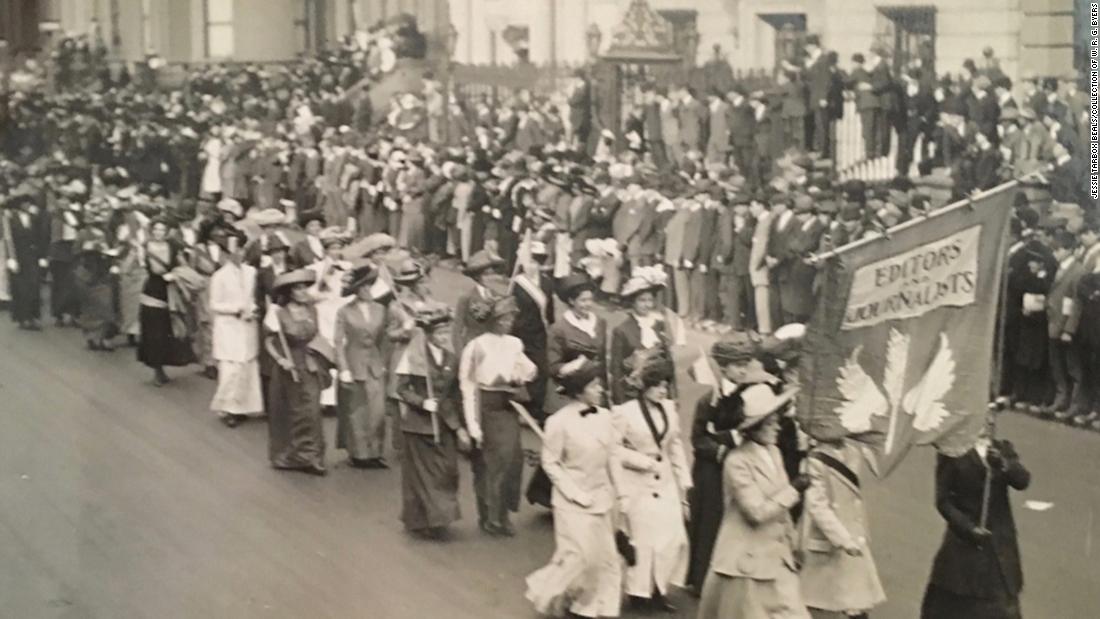
The seeds of #MeToo started growing 100 years ago
November 8, 2019
(CNN)In their book “She Said: Breaking the Sexual Harassment Story That Helped Ignite a Movement,” journalists Jodi Kantor and Megan Twohey detail how their reporting on the Harvey Weinstein case inspired women across the country to come forward with their own stories.
But while the hashtag that originated with activist Tarana Burke went viral after Kantor, Twohey and Ronan Farrow exposed the sexual misconduct allegations against Weinstein, #MeToo as an idea isn’t new. Kantor and Twohey are part of a long tradition of women journalists whose work has fueled feminist movements, particularly by shedding light on the obstacles, indignities, and violence women face in the workplace.
The symbiosis between journalism and women’s activism dates back to the late 19th and early 20th centuries, when a significant cohort of women entered the newspaper industry. Elizabeth Jordan, for example, began her career writing for the Chicago Tribune and the New York World in the 1880s and 1890s, eventually working her way up to the editorship of Harper’s Bazar (as it was then spelled).
As a writer and an editor, Jordan used her platforms to draw attention to women’s issues and became an influential figure in the New York suffrage campaign. On the opposite coast, San Francisco journalist Miriam Michelson achieved celebrity status for her coverage of women’s conventions and profiles of leaders such as Susan B. Anthony.
By keeping the suffrage movement in the headlines, newspaperwomen like Michelson played a pivotal role in the passage of the 19th Amendment, which gave women the right to vote 100 years ago.
As token women in the hyper-masculine environment of the newsroom, 19th-century women journalists were well-attuned to the phenomenon we now call “sexual misconduct.” Since male editors would have been reluctant to run stories that implicated fellow men (or even themselves), Michelson, Jordan, and their contemporaries found an ingenious way to expose women’s common experiences of sexual intimidation in the workplace. They turned to fiction.
Michelson’s fictional series “A Yellow Journalist,” which appeared in The Saturday Evening Post in 1905, featured her alter ego, an ambitious so-called girl reporter named Rhoda Massey. Throughout, a male reporter aggressively pursues Rhoda. His behavior smacks of sexual harassment — especially since Rhoda makes it clear that she is less interested in marriage than she is in getting the scoop that will land her a front-page byline.
Just as #MeToo inspired one woman after another to tell their stories, Michelson’s willingness to confront sexual harassment in her fiction emboldened other women to do the same. It became common practice for women journalists to pen fictional narratives based on their real-life adventures and to incorporate their own encounters with powerful, predatory men in their fiction.
Initially serialized in popular periodicals like American Magazine, Collier’s, and Good Housekeeping, these stories reached even wider audiences when they were reprinted as novels.
In 1914, Jordan published “May Iverson’s Career,” a novel about a young female journalist based on Jordan’s experiences as a rookie reporter. In the opening chapters, Jordan’s heroine faces multiple instances of sexual assault and harassment. “He was always a snake in the dream — a fat, disgusting, lazy snake, slowly squirming over the ground near me,” May observes of the male colleague who leers over her desk.
When a male source sexually assaults May during an interview, she narrowly escapes. “Gasping and struggling and pushing him away with all (her) strength,” May “knock(s) over a stand of ink, which crawled to the edge of his desk in little black streams and fell on his gray clothes.” While the man bears the stains of this incident, May, like many women, is seized by a “deep-down, paralyzing fear that there must be something wrong in me that brought these things upon me, that perhaps I, too, was to blame.”
Michelson and Jordan told these stories as cautionary tales, but they did not intend to dissuade women from pursuing journalism. On the contrary, they hoped their work would influence more women to follow professional paths. They used fiction to initiate a shift in the cultural narrative — a feat that has been at least partially accomplished a century later with #MeToo.
By confronting sexual violence, these nineteenth-century women sparked conversations about gender politics that continue today. And much like today, the terrain was more treacherous for women journalists of color. Ida B. Wells put her life on the line when she reported on the Southern horrors of lynching.
While Michelson and Jordan turned to fiction, at times veiling the seriousness of their subject matter under the lighthearted guise of comedy, Wells took a different approach, using statistics to document the rising rates of racial violence in the United States at the turn of the 20th century. Bolstered by hard data, her investigative reporting fueled a national anti-lynching campaign and exposed the racialized myth that only white women were sexually vulnerable, demonstrating how that myth covered up a refusal to treat the rape of black women by white men as a crime.
Kantor and Twohey have inherited the mantle of these early journalistic trailblazers. That stories of sexual abuse, assault, and harassment now regularly appear in the news and not only in fiction has gone a long way towards “right(ing) wrongs” by “turn(ing) the light of truth upon them,” in Wells’s words.
Sign up for CNN Opinion’s new newsletter.
But we should not underestimate the role that fiction continues to play in sparking difficult conversations about gender, justice, and inequality. Kristen Roupenian’s short story “Cat Person” generated an important dialogue about sex and power when it appeared in the New Yorker on the heels of early #MeToo revelations, while 21st-century activists have found inspiration in Margaret Atwood’s 1985 dystopian novel, “The Handmaid’s Tale.”
The fact that “The Testaments,” Atwood’s co-Booker Prize-winning sequel to “The Handmaid’s Tale,” shared its September release date with “She Said” is serendipitously symbolic. Side by side, these two books serve as a timely reminder of how women writers have long been using journalism and fiction — and the interplay between these genres — to ignite movements.
Read more: http://edition.cnn.com/







